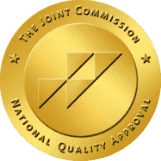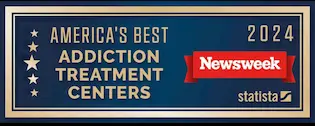TMS for Bipolar Disorder: How It Can Help
TMS for Bipolar Disorder: How It Can Help
Discover the transformative potential of TMS for bipolar disorder in this article. Iris Healing can help you get the treatment and support you need.
Introduction to TMS Therapy
Bipolar disorder is a complex mental health condition characterized by periods of depression and mania or hypomania. The main type of treatment for bipolar disorder typically includes mood-stabilizing medications, psychotherapy, and lifestyle adjustments. However, TMS for bipolar has also been shown to be a successful treatment.
Find Help Now
What Is TMS?
Transcranial magnetic stimulation (TMS) is a cutting-edge treatment method that’s been making waves in the field of psychiatry. TMS has been used to treat several different mental health conditions successfully.
TMS is a non-invasive procedure. It utilizes magnetic fields to stimulate nerve cells in the brain.1 This treatment primarily targets those regions involved with mood control and depression.
TMS therapy has proven effective in treating certain types of mental health disorders. Some of the most notable are major depressive disorder and TMS for bipolar disorder.
Brief History of TMS Use
TMS was introduced in 1985 by Anthony Barker and his colleagues in Sheffield, UK.2 Barker and his team developed a device that could create a magnetic field over a specific area of the brain.
The magnetic field would rapidly change, creating small electrical currents in the targeted region of the brain. These electrical currents could stimulate or inhibit the nerve cells in that area.
In 2008, the US Food and Drug Administration approved using TMS as a treatment for major depressive disorder for patients who hadn’t responded to at least one antidepressant. This marked a major step forward in recognizing TMS as a legitimate and beneficial treatment option in the psychiatric field.
What Is Bipolar Disorder?
Bipolar disorder is a brain disorder characterized by unusual shifts in mood, energy, activity levels, and the ability to carry out day-to-day tasks.3 It’s a chronic condition that requires lifelong management.
Bipolar disorder is typically categorized into three main types. They include the following:
- Bipolar I Disorder: This is defined by manic episodes that last at least seven days.4 It is also defined by manic symptoms that are severe enough to warrant immediate hospital care. Depressive episodes often occur as well, typically lasting at least two weeks.
- Bipolar II Disorder: This is diagnosed when a person has had at least one major depressive episode lasting at least two weeks and at least one hypomanic episode lasting at least four days, but never a full manic episode.
- Cyclothymic Disorder: This is diagnosed when a person has had numerous periods of hypomanic symptoms. The individual will have also had numerous periods of depressive symptoms for at least two years (one year in children and adolescents).
Symptoms of bipolar disorder can be categorized as the following symptoms:
Manic Symptoms
Manic symptoms of bipolar disorder often include the following:
- Increased energy, with hyperactivity and a decreased need for sleep
- Excessively “high” or euphoric mood
- Extreme irritability
- Racing thoughts and talking very fast, jumping from one idea to another
- Distractibility, can’t concentrate well
- More goal-directed activity than usual
- Taking on multiple new projects and responsibilities
- Restlessness and agitation
- Risky behavior, such as going on spending sprees, reckless driving, or risky sexual behavior
Depressive Symptoms
Depressive Symptoms of bipolar disorder include the following:
- Persistent feelings of sadness, anxiety, or emptiness
- Feeling hopeless or pessimistic
- Irritability
- Loss of interest in activities once enjoyed
- Feeling tired or low energy
- Difficulty concentrating, remembering, or making decisions
- Difficulty sleeping, early-morning awakening, or oversleeping
- Appetite and weight changes
- Thoughts of death or suicide, or suicide attempts
How Effective Is TMS Therapy?
TMS has shown effectiveness in treating various mental health conditions. It is particularly useful in cases where traditional treatment approaches have been ineffective.
Examples of conditions TMS is effective for include the following:
Major Depressive Disorder (MDD)
TMS’s effectiveness has been most studied in its application to major depressive disorder. It was approved for patients who did not respond to other antidepressant medication treatment.
TMS can reduce the symptoms of depression, and these benefits can be long-lasting. TMS is now widely recognized as a valuable tool for treatment-resistant depression.
Bipolar Disorder
TMS for bipolar disorder has been gaining traction as a non-pharmacological treatment option. TMS for bipolar disorder is a promising tool, especially for those whose symptoms have not adequately responded to medication or psychotherapy.
TMS for bipolar disorder operates on the principle of using magnetic fields to stimulate specific brain areas. These areas are associated with mood regulation. By targeting these areas, TMS for bipolar disorder aims to rebalance abnormal neural activity.
The use of TMS for bipolar disorder is most effective during the depressive phases of the illness.
Anxiety Disorders
Some early studies suggest that TMS could also benefit certain anxiety disorders. This includes post-traumatic stress disorder (PTSD) and obsessive-compulsive disorder (OCD).
However, this application of TMS is still considered experimental. More research is needed to confirm these early findings.
Other Conditions
Preliminary research is also exploring TMS therapy’s potential benefits for other conditions. This includes conditions like schizophrenia, stroke recovery, tinnitus, and autism.
How TMS for Bipolar Disorder Works
In TMS therapy for bipolar disorder, an electromagnetic coil is placed against the scalp. This generates focused magnetic pulses. These pulses pass through the skull and into the brain, which induces a small electrical current.
This current stimulates the underactive neurons in the prefrontal cortex. It aims to restore normal function and alleviate depressive symptoms. The prefrontal cortex is a region associated with mood regulation.
TMS Research
Multiple studies have supported the effectiveness of TMS for bipolar depression. For instance, a study published in the Journal of Affective Disorders in 2019 found that TMS significantly reduced depressive symptoms in most patients with treatment-resistant bipolar disorder.5
Where Is TMS Therapy Performed?
TMS therapy is usually performed in a doctor’s office under the supervision of a medical professional. It does not require anesthesia or sedation, so the patient remains awake and alert during the procedure.
A typical TMS session lasts around 40 minutes, with the patient receiving treatment five days a week for six weeks. However, this can vary depending on the individual’s needs.
What To Expect From TMS For Bipolar Disorder
TMS for bipolar disorder involves multiple stages, each with its unique aspects. Here is a general guide to what you can expect from the process:
Consultation
Before starting TMS for bipolar disorder, you’ll have a consultation with a mental health professional. Doctors will review your medical history, discuss your symptoms, and assess whether TMS suits you.
They will also explain the procedure and what you can expect from TMS for bipolar disorder treatment. Healthcare professionals offer you an opportunity for you to ask any questions.
Treatment Planning
After the initial consultation, a treatment plan will be drawn up. This includes determining the following:
- The right placement on your head where the TMS coils will be positioned
- The magnetic field’s strength
- The number and frequency of TMS treatments
These parameters are crucial for the effectiveness of TMS for bipolar disorder.
During Treatment
The TMS machine clicks, and you may feel a tapping sensation on your scalp. You’ll be awake and alert during the procedure and can resume normal activities immediately afterward.
Common side effects of TMS for bipolar disorder are generally mild and include headaches or discomfort at the treatment site.
Progress Monitoring
Your mental health professional will closely monitor your progress throughout the TMS treatment for bipolar disorder.
This often includes regular check-ins to assess changes in your mood, energy level, and ability to function. These will help determine the therapy’s effectiveness.
Post-Treatment
Upon completing the initial course of TMS treatment for bipolar disorder, your response to treatment will be evaluated. Depending on your progress, your doctor might suggest maintenance sessions. However, the schedule is likely to be less frequent.
Long-Term Effects
Many patients see significant improvement in their bipolar symptoms after TMS. However, it’s important to know that results vary. Some patients may need additional TMS sessions in the future.
They may also need to continue other treatments, such as psychotherapy. As with any treatment, the effectiveness of TMS for bipolar disorder can differ from person to person.
How to Get the Most Out of TMS for Bipolar Disorder
Getting the most out of TMS for bipolar disorder requires a comprehensive approach. This method combines appropriate patient selection, treatment customization, and ongoing monitoring.
Personalization
Treatment customization is crucial. TMS sessions should be tailored to the patient’s specific needs and should involve determining the appropriate stimulation parameters and targeting the relevant brain regions.
This may involve both high-frequency stimulation to elevate mood and low-frequency stimulation for calming effects.
Consistency is Key
Consistency and adherence to the recommended treatment schedule are vital. Typically, TMS therapy consists of several sessions over a few weeks. Patients should attend all sessions as prescribed and promptly communicate any concerns or side effects to their healthcare provider.
Overview
In summary, the most effective utilization of TMS therapy for bipolar disorder involves a personalized and holistic approach, encompassing patient selection, customized treatment planning, and continuous monitoring. This helps to maximize the potential benefits of this innovative treatment option.
What Types of Treatment Can Be Utilized Alongside TMS for Bipolar Disorder?
TMS can be utilized alongside various types of treatments for bipolar disorder to provide a comprehensive and holistic approach to managing the condition.
Here are some treatment options that can complement TMS therapy:
Medication Management
TMS can be integrated with medication regimens prescribed for bipolar disorder. TMS might enhance the effectiveness of certain medications, allowing for optimized symptom control.
Lifestyle Modifications
Lifestyle factors such as regular exercise, maintaining a balanced diet, getting sufficient sleep, and minimizing stress can significantly impact bipolar disorder. TMS can be combined with guidance on lifestyle changes to enhance overall well-being.
Support Groups
Joining support groups or engaging in peer support networks can provide individuals with bipolar disorder the opportunity to share experiences, gain insights, and receive emotional support. TMS therapy can complement these efforts by addressing underlying neurobiological aspects.
Mindfulness and Meditation
Mindfulness practices and meditation techniques can help manage stress, regulate emotions, and improve overall mental health. These strategies can work synergistically with TMS to promote stability in mood.
Family Therapy
Involving family members in therapy sessions can improve understanding, communication, and support within the family unit. Integrating TMS with family therapy can lead to a more cohesive approach to treatment.
Routine Management
Establishing and adhering to a consistent daily routine can aid in stabilizing mood swings. TMS can be combined with strategies for maintaining a structured routine to enhance its effects.
Education and Self-Management Skills
Providing individuals with bipolar disorder and their families with education about the condition and self-management skills empowers them to actively participate in their treatment journey. TMS can be paired with educational resources to foster greater understanding and collaboration.
It’s important for individuals with bipolar disorder to work closely with their mental health professionals to develop a tailored treatment plan that integrates TMS with the most suitable combination of therapies for their specific needs.

Access Effective TMS For Bipolar Disorder At Iris Healing
Iris Healing is dedicated to providing effective treatment options for individuals with mental health conditions, including bipolar disorder. Our team of highly skilled professionals is well-versed in administering TMS therapy with expertise.
We are extensively trained in delivering this treatment modality, ensuring patients receive the highest level of care and safety throughout the therapeutic process.
Why Choose Iris Healing?
Patient comfort and well-being are of utmost importance at Iris Healing. Our treatment facility is designed to create a safe and comfortable environment where individuals can focus on their healing journey.
The compassionate and supportive atmosphere encourages open communication and fosters a sense of trust between patients and their treatment providers.
By offering TMS therapy for bipolar disorder, Iris Healing demonstrates our commitment to utilizing evidence-based practices and staying at the forefront of advancements in mental health treatment.
Find TMS Treatment for Bipolar Disorder Today
Contact Iris Healing to learn more about how TMS for bipolar disorder can help manage your symptoms and improve your life today.
Resources
- https://www.healthline.com/health/tms-therapy
- https://www.ncbi.nlm.nih.gov/pmc/articles/PMC4815479/
- https://www.nimh.nih.gov/health/topics/bipolar-disorder
- https://www.medicalnewstoday.com/articles/324437
- https://www.ncbi.nlm.nih.gov/pmc/articles/PMC6790310/
- https://pubmed.ncbi.nlm.nih.gov/31003113/




